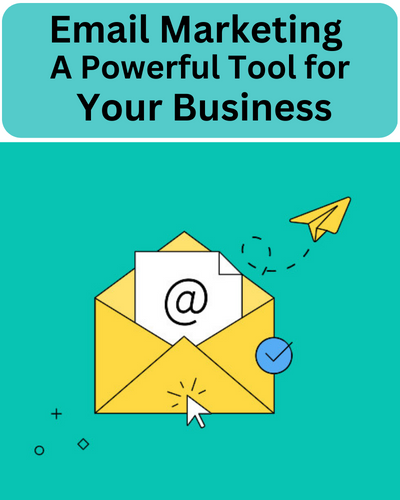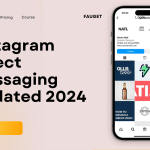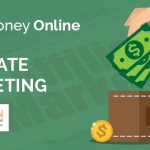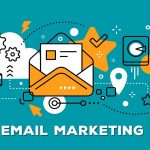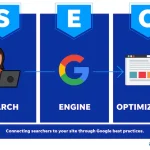The Power of Email Marketing in 2023: Unleashing the Untapped Potential for Your Business
Introduction
In the ever-evolving landscape of digital marketing, businesses are constantly seeking effective strategies to reach their target audience. While numerous marketing channels have emerged, one timeless tool continues to prove its worth: email marketing. Despite the rise of social media and other platforms, email marketing Power 2023 remains a crucial and powerful tool for businesses to connect with their customers and drive growth.
Table of Contents:
I. The Evolution of Email Marketing
- A brief history of email marketing
- Importance of adaptation to current trends
- Email marketing’s resurgence in recent years
II. Benefits of Email Marketing
III. Creating Effective Email Campaigns
- Building Email Lists
- Crafting Compelling Email Content
- Automation and Personalization
- Optimizing for Deliverability and Engagement
IV. Integrating Social Media with Email
V. Overcoming Email Marketing Challenges
VI. Email Marketing Metrics and KPIs
VII. The Role of AI and Automation
VIII. Email Marketing Trends to Embrace in 2023
IX. Harnessing Email Marketing for Business Growth
X. Summary
XI. Frequently Asked Questions (FAQs)
The Evolution of Email Marketing
1. A brief history of email marketing
Email marketing has come a long way since its inception. Originating in the early days of the Internet, businesses quickly realized the potential of communicating with their customers through email. As technology advanced, email marketing grew more sophisticated, allowing businesses to deliver targeted messages and drive customer engagement.
2. Importance of adaptation to current trends
To remain relevant in today’s fast-paced digital era, it is essential for businesses to adapt their email marketing strategies to current trends. By embracing new technologies and techniques, businesses can stay ahead of the competition and make the most of the untapped potential email marketing has to offer.
3. Email marketing’s resurgence in recent years
While some may have predicted the decline of email marketing power 2023 with the rise of social media, recent years have seen a resurgence in its effectiveness. As consumers become more selective about the content they engage with, email marketing provides a direct and personalized communication channel that cuts through the noise of other platforms.
Benefits of Email Marketing
Email marketing offers a multitude of benefits that can significantly impact a business’s success and bottom line.
- Cost-effective and efficient communication: Email marketing allows businesses to reach a large audience at a fraction of the cost compared to traditional advertising methods. With automated systems and carefully crafted campaigns, businesses can efficiently communicate their message and drive results.
- Targeted and personalized marketing campaigns: Unlike other marketing channels, email marketing enables businesses to create highly targeted and personalized campaigns. By segmenting their subscriber base and leveraging customer data, businesses can deliver relevant content that resonates with individual recipients, leading to higher engagement and conversion rates.
- Increased brand engagement and customer loyalty: Regularly engaging with customers through email marketing fosters a sense of connection and loyalty. By providing valuable content, exclusive offers, and personalized experiences, businesses can cultivate strong relationships and keep their brand top of mind.
- Measurable and trackable results: One of the greatest advantages of email marketing is its ability to provide measurable and trackable results. By analyzing open rates, click-through rates, and other key metrics, businesses can gain valuable insights into the effectiveness of their campaigns and make data-driven improvements.
Creating Effective Email Campaigns
To harness the full potential of email marketing, businesses need to craft effective email campaigns that grab attention and drive desired actions.
1. Building Email Lists
Building a quality subscriber base is essential for successful email marketing. Employ the following strategies to grow and maintain a valuable list of subscribers:
- Implement lead magnets and incentives: Offer compelling incentives such as exclusive content, discounts, or giveaways to attract subscribers and encourage them to join your email list.
- Segment subscribers for targeted messaging: Divide your subscriber base into smaller groups based on demographics, preferences, or past interactions. This segmentation allows for highly targeted and personalized messaging tailored to specific segments.
2. Crafting Compelling Email Content
Creating engaging email content is crucial to captivating readers and driving actions. Consider the following tactics:
- Structure emails for maximum impact: Organize your content using a clear and logical structure, incorporating short and long sentences to maintain reader interest. Begin with a captivating introduction, provide valuable information, and conclude with a strong call to action.
- Write attention-grabbing subject lines: Craft subject lines that are concise, intriguing, and relevant. A compelling subject line increases the chances of your email being opened and read.
- Utilize visual elements and interactive content: Incorporate images, videos, or GIFs to make your emails visually appealing and interactive. This not only enhances the user experience but also increases engagement and click-through rates.
3. Automation and Personalization
Implementing automation tools and personalization techniques can significantly enhance the efficiency and impact of your email campaigns.
- Leverage automation tools for enhanced efficiency: Automation allows for seamless and timely delivery of emails based on predetermined triggers or customer actions. This streamlines the process and ensures a consistent and personalized customer experience.
- Harness customer data for personalized messaging: Utilize customer data to personalize your emails further. Tailor the content, offers, and recommendations based on the subscriber’s demographics, purchase history, or browsing behavior to create a more intimate connection.
4. Optimizing for Deliverability and Engagement
For email marketing to be effective, it is crucial to ensure that emails reach the intended recipients and engage the readers.
- Ensure emails hit the inbox and avoid spam filters: Follow best practices and adhere to email deliverability guidelines to increase the chances of your emails bypassing spam filters and landing in the inbox.
- A/B testing for higher open and click-through rates: Experiment with different subject lines, content variations, and call-to-action placements through A/B testing. Continuously analyze the results to optimize your campaigns for higher open and click-through rates.
- Best practices for mobile-friendly emails: As more people access emails through their mobile devices, optimizing your emails for mobile viewing is paramount. Design responsive email templates that adapt to various screen sizes, ensuring a seamless user experience.
Integrating Social Media with Email
Harnessing the power of social media alongside email marketing can amplify your marketing efforts and expand your reach.
- Strategies for cross-channel promotion and audience growth: Promote your email list on social media platforms to encourage your followers to subscribe. Integrate social sharing buttons within your emails to encourage recipients to share your content and reach a broader audience.
Overcoming Email Marketing Challenges
While email marketing offers immense potential, businesses need to overcome certain challenges to maximize its effectiveness.
1. Overcoming Content Saturation
With inboxes flooded with promotional emails, it is crucial to adopt innovative approaches to stand out and capture the recipient’s attention.
- Craft hyper-targeted content for specific demographics: Tailor your content to different segments of your subscriber base, catering to their specific interests and needs. This level of personalization increases the likelihood of engagement and conversions.
2. Navigating Privacy Regulations
As privacy regulations evolve, businesses must adapt their email marketing practices to comply with new standards and build trust with their subscribers.
- Adapting to evolving privacy laws (e.g., GDPR, CCPA): Stay up-to-date with privacy regulations and ensure your email marketing practices align with the requirements to protect subscriber data and maintain compliance.
- Respecting subscriber consent and building trust: Obtain proper consent from subscribers and clearly communicate how their data will be used. Engage in transparent practices, providing options for subscribers to manage their preferences and unsubscribe easily if desired.
3. Combating Email Fatigue
To combat subscriber fatigue and maintain engagement, businesses need to employ tactics that keep their emails fresh and compelling.
- Designing effective re-engagement campaigns: Reach out to inactive subscribers with targeted campaigns to reignite their interest. Offer exclusive discounts, personalized content, or surveys to encourage their participation and regain their attention.
Email Marketing Metrics and KPIs
Measuring the success of your email marketing campaigns is vital for continuous improvement and assessing the impact on your business.
- Essential metrics to measure email marketing success: Track metrics such as open rates, click-through rates, conversion rates, and unsubscribe rates to gauge the effectiveness of your campaigns.
- Analyzing performance data for continuous improvement: Regularly analyze campaign performance data to identify areas of improvement. A deep understanding of the metrics allows for data-driven decision-making and optimization of future campaigns.
- Benchmarking against industry standards: Compare your email marketing metrics to industry benchmarks to gain perspective on the effectiveness of your campaigns and identify areas where you can strive for improvement.
The Role of AI and Automation
Artificial Intelligence (AI) and automation have revolutionized various industries, and their impact on email marketing strategies is no exception.
- The impact of AI on email marketing strategies: AI-powered tools can analyze customer data, predict user behavior, and deliver highly personalized content. This enables businesses to target individual subscribers more effectively and deliver relevant messaging.
- Leveraging automation and machine learning for smarter campaigns: Automation and machine learning algorithms can automate processes, such as personalized drip campaigns, optimizing delivery times, and generating triggered emails based on user behavior. This allows businesses to create smarter, more effective campaigns with less manual effort.
Email Marketing Trends to Embrace in 2023
As technology and consumer preferences continue to evolve, businesses should consider the following emerging trends and innovations in email marketing.
- Conversational email marketing and interactive experiences: Utilize conversational language and interactive elements, such as quizzes or surveys, to create immersive experiences that engage subscribers and encourage active participation.
Harnessing Email Marketing for Business Growth
Real-life success stories and case studies demonstrate the power of email marketing in driving business growth.
- Scaling email marketing efforts for maximum impact: By leveraging automation, personalization, and other techniques, businesses can scale their email marketing efforts to reach larger audiences and drive substantial growth.
Summary
In summary, email marketing remains a powerful tool with untapped potential for businesses in 2023. When executed effectively, it offers cost-effective communication, targeted marketing, increased brand engagement, and measurable results. By overcoming challenges, integrating with social media, and embracing emerging trends, businesses can unlock the true email marketing power 2023 and propel their growth.
Frequently Asked Questions (FAQs)
- How often should I send emails to my subscribers?
- The frequency of emails may vary, but it’s important to strike a balance. Regular communication without overwhelming subscribers is key. Consider segmenting your subscriber list based on engagement levels and tailoring the frequency accordingly.
- Can I use email marketing for B2B purposes?
- Absolutely! Email marketing is a versatile tool suitable for both B2C and B2B purposes. Tailor your content and messaging to address the specific pain points and needs of your B2B audience.
- What are the significant differences between transactional and promotional emails?
- Transactional emails are triggered by a specific user action, such as a purchase confirmation or password reset. They provide the necessary information and have a higher open rate. Promotional emails, on the other hand, are marketing communications aimed at promoting products, services, or offers.
- How can I avoid my emails being marked as spam?
- To avoid your emails being marked as spam, follow best practices such as obtaining proper consent, sending relevant content, avoiding misleading subject lines, and ensuring proper email authentication and deliverability practices.
- Is it better to outsource email marketing or keep it in-house?
- The decision to outsource or keep email marketing in-house depends on various factors, such as available resources, expertise, and budget. Consider your specific requirements and weigh the benefits and drawbacks of each approach before making a decision.
For more information or do you have any relevant questions feel free to Click Here
